Historic St. Mary’s City
After giving a Slave Dwelling Project presentation at Sweet Briar College in Sweet Briar, Virginia, I received an invitation from one of the audience members to sleep in a slave cabin in Historic St. Mary’s, Maryland.
As night approached, I began to realize that I was not in South Carolina anymore. There was a chill in the Maryland air of which my carryon luggage did not allow me to prepare. Terry and I had access to the inn before we had to proceed to the cabin for the sleepover. There we would engage in conversation and wait for the three college students who never showed. Before we made the walk to the cabin, Terry donned his long sleeved wool lined shirt, long pants and a wool hat. I on the other hand donned short pants and a short sleeved tee shirt.
In the space I was thankful that the my host had provided a cot, insulated sleeping bag and pillow, items required when I fly to sites to conduct the Slave Dwelling Project. Terry and I got in some quality conversation about the archaeology, the inn, the cabin and Historic St. Mary’s City before I got into my sleeping bag and went immediately to sleep.
Monday morning was devoted to preparing for a radio interview at a station located in the state of Michigan. This would be our second attempt to try to make this interview happen. We both eventually concluded that conducting an interview from a slave cabin would work best. Coincidently, Terry was well aware of the interviewer and the radio station which was located on the campus of his alma mater Michigan State University. All who were involved in making the interview happen were nervous about using a cell phone but we managed to make it work. >>> LISTEN (Opens in a new window)
After lunch, Terry and a colleague took me on a personal guided tour of Historic St. Mary’s City. The tour included the well preserved ruins and intact buildings that were placed there by Maryland’s founding fathers.
Scheduled for 7:00 pm was a Slave Dwelling Project lecture that was free and open to the public. The turnout for the lecture was impressive interspersed with senior community members, St Mary’s College faculty and students. One audience member gave me her new signed book titled Sotterley Plantation and I am in it. I often get signed books but rarely am I in them. After the lecture, I spent the night in the inn.
Whenever I travel to sites with extant slave dwellings, I encourage my hosts to maximize the time that I am there by planning public programs. With the stay in the slave cabin and the two lectures, Historic St. Mary’s City did a great job in doing that. Above and beyond the Historic St. Mary’s City activities, I was scheduled to give a 7:00 pm lecture at the Prince George’s County Memorial Library in Hyattsville, Maryland.
This lecture in Hyattsville, Maryland presented a logistical problem. While the library could provide an honorarium, they could not provide lodging. Hyattsville, Maryland is located near the Baltimore-Washington International Airport, where I flew in for this visit. After the lecture, the plan was for me to drive two hours plus back to Historic St. Mary’s City, Maryland to sleep in the inn. The next day, I would have to drive back to the Baltimore-Washington International Airport to turn in a rental car and catch a 1:00 pm flight.
Fate entered the picture, I received an email from a friend and avid follower of the Slave Dwelling Project. I met Beth Lingg years ago on a trip down the Mississippi from Memphis, Tennessee to New Orleans, Louisiana on the Delta Queen river boat. Beth lives in Bowie, Maryland and learned about the lecture and wanted to attend but would prefer not to drive at night. The compromise was a night sleep on her couch for a ride to and from the lecture.
It gets better. When I stayed in a slave cabin on Ossabaw Island, Georgia, I was joined by author Tony Horwitz. As a result of the stay Tony wrote an article about the project that was published in the October 2013 issue of the Smithsonian Magazine. Tony called to inform me that he was in DC visiting his mother and he had fresh copies of the magazine that he wanted to deliver to me personally over lunch and his mom would be joining us. At lunch at the inn in Historic St. Mary’s City, Mrs. Horwitz expressed that if that logistical matter had not been handled, I could have stayed at her house. After lunch, the three of us went to visit the slave cabin. Toni expressed the similarities between that cabin and the one we slept in on Ossabaw Island, GA.
After hanging out with Tony and his mom, I got to my friend Beth’s house in Bowie, Maryland in ample time for us to engage in meaningful conversation before we had to proceed to the lecture. It turned out that in the audience was a representative from the Lee-Fendall House which will be one of the 2014 stays for the Slave Dwelling Project.
It did turn out that driving the 30 minutes from Beth’s to the Baltimore-Washington International Airport was far more leisurely and less stressful than the two hours plus it would have taken to drive from Historic St. Mary’s City Maryland. This convenience was all due to the ever increasing popularity of the Slave Dwelling Project.
Building Meaning: My Night in the Duplex
By Terry Brock
Since 2007, I have been studying the lives of the African Americans who lived in the duplex at Historic St. Mary’s City as part of completing my dissertation in Anthropology and archaeology at Michigan State University. It has been one of the most enriching and challenging experiences of my life. As I approach the completion of my dissertation, I have found myself being more reflective about the entire process, searching for the larger meaning of the project: where does it fit into the scholarship on enslaved and free African Americans?
How will this research impact how we understand the lives of African Americans as they took their freedom? What does this building mean to those who lived in it? Was it a place of pride, or shame, was it temporary or permanent, was it a home or a prison? And most importantly, how will this work have an impact on our current ways of thinking and understanding the world? Will it have an impact locally, regionally, nationally? After dedicating a third of your life to one project you begin to wonder if the time you put in was worth it. I have little doubt that this project has been worth it, and Joe’s visit, and our night staying in the quarter, made that more evident then ever.
One of the statements that the National Trust for Historic Preservation often uses is, “This Place Matters”. It was something that Joe emphasized during his visit to Historic St. Mary’s City: that the duplex matters not so much because it’s old, but because it is one of the few things that represents the people who lived in it. As an archaeologist, this is the most important part of my work. Most people think that archaeologists study old stuff, but really, we study people. The objects are just a means towards understanding the lives of people who couldn’t write things down.
These physical places have no meaning to us (they don’t “matter”) if the stories of the people who built them, lived in them, and died in them aren’t told. The Duplex is a fascinating piece of architecture that is one of the few remaining examples of a two-pen slave quarter. But that is only a small glimpse into the lives of the people who lived in it. Because that story is amazing, and powerful. It is a story of hope and resistance and the yearning for freedom and the taking of that freedom and the struggle to define and enjoy and participate in that freedom. It is the quintessential American story, and it is what makes this place matter.
The duplex was one of at least seven domestic buildings used for housing laborers on a 19th-century slave and tenant plantation in St. Mary’s City, Maryland. The buildings stood in a straight line, extending behind the manor home and agricultural buildings. In 1860, 57 enslaved African Americans lived in these buildings, working the wheat and tobacco fields, washing and cleaning in the Manor Home, and raising their children and collaborating with the community who lived in the row of slave quarters. These buildings were simultaneously a prison and a home: it was a place of bondage, but it was also one of the few places where they could escape that bondage, live with their family, and rest, recuperate, and plot resistance against their owners. It was a sanctuary. It was a place that had meaning to them: it mattered.

This thimble has the words “Forget Me Not” on it. It was likely used by enslaved or tenant women while they mended clothes near the site of the Duplex. It also carries a message for us: don’t forget the lives of those who lived and worked in our historic buildings (photo courtesy of Historic St. Mary’s City).
After slavery, the duplex continued to house African American families. It was a place where husbands and wives and children who had been separated by the slave trade reconnected, and entered into sharecropping contracts with their former owners, earning money off of their labor for the first time. It was here that children did their homework, learning to read and write, an activity that they were denied during slavery. We know that the families made improvements to the home, adding glass windows and wooden floors and turning the duplex into a two-room, single family home. It was here that women supplemented their income by washing and mending clothes. This place no longer represented a house of bondage, but instead was a place of family, learning, growth, independence, and strength. It was where these families defined their freedom, and carried out the daily activities of making a life. This place mattered.
Spending the night somewhere is an intimate act. Where you sleep is often where you live. If you let someone else sleep where you live, it is an act of trust, faith, kindness, and friendship. You are letting that person into a part of your life that you rarely share. Staying the night in the duplex felt simultaneously like an invasion and a blessing. It is reflective of the entire process of conducting research. I have literally been picking through their trash, taking bits of their intimate lives to piece together their day-to-day experience. I have studied their house for almost seven years: the place that was their private sanctuary, where they could forget about their enslavement or racism or the oppression, and I’ve been in it. Like Goldilocks, I’ve been tasting their porridge and sitting in their chairs. And then I slept in their bed.
This is particularly resonate for me because I’m a white man, and the duplex is a black space. It was built by African Americans, lived in by African Americans, repaired, modified, and changed by black hands. If ever there was a historical figure that would be considered an intruder in this building, it would be a white man. It is quite likely that I’m the first white person to ever sleep there. I owe the Duplex’s former inhabitants an enormous, un-payable debt. As I lay there, I couldn’t help but reflect on what this building has meant to me. It has allowed me to work in the field that I love. I have been able to make contributions to the academic discourse about our shared past because of this building. Because of the Duplex and the people who lived in it, I will be able to get a PhD. I met my wife because I came to St. Mary’s City to study this building. My life is entirely indebted to this building and those people who lived in it, because I’ve been able to sleep in the duplex for the past seven years. My only hope is that by telling their story, and by sharing it with the public so that they can learn from it, will serve as a token of my gratitude. Because this place that mattered so much to them, matters to me, and I hope that it will matter to others.
And we are planning on doing just that. We have received funding from the Maryland Commission on African American History and Culture to turn the building into an interpretive exhibit that will examine the period of enslavement, post-slavery, and the 20th century occupations of the building. We have built and continue to update a digital exhibit about the men and women who lived and worked on the site, and we update regularly on Twitter. We have been working with descendants of the Milburn family, who lived in the building during the 20th century, to ensure that these stories are told accurately and with their support. We hope this building will serve as a place that has meaning for generations to come, where the story of the past, and the struggle for freedom and equality can be told through the lives of those who lived it. It is the least we can do, and we hope you will have an opportunity to visit when we’re done, so that this place can become meaningful to you, too.
Related Links
“On Slave and Tenant Quarters and the Importance of Naming,” www.terrybrock.com
“Preservationist Sleeps in Former Slave Dwellings,” WKAR, Public Media from Michigan State University, http://www.wkar.org.


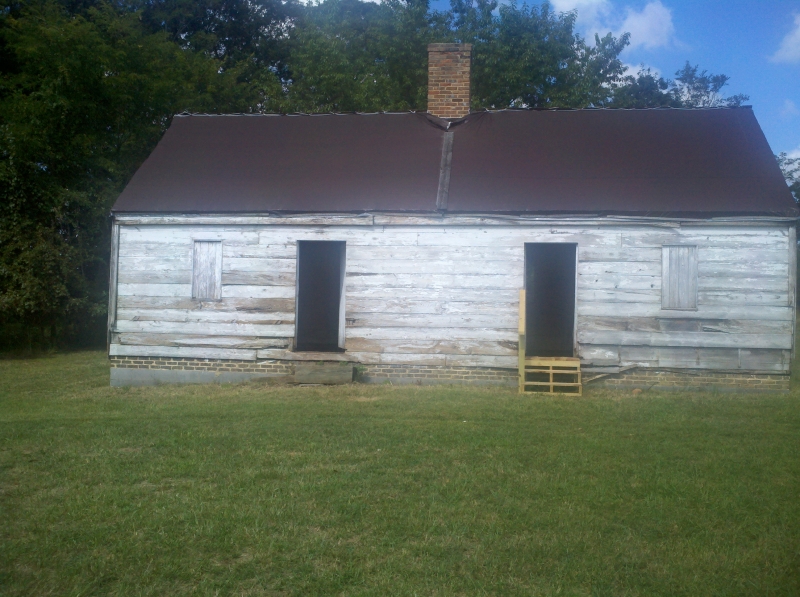
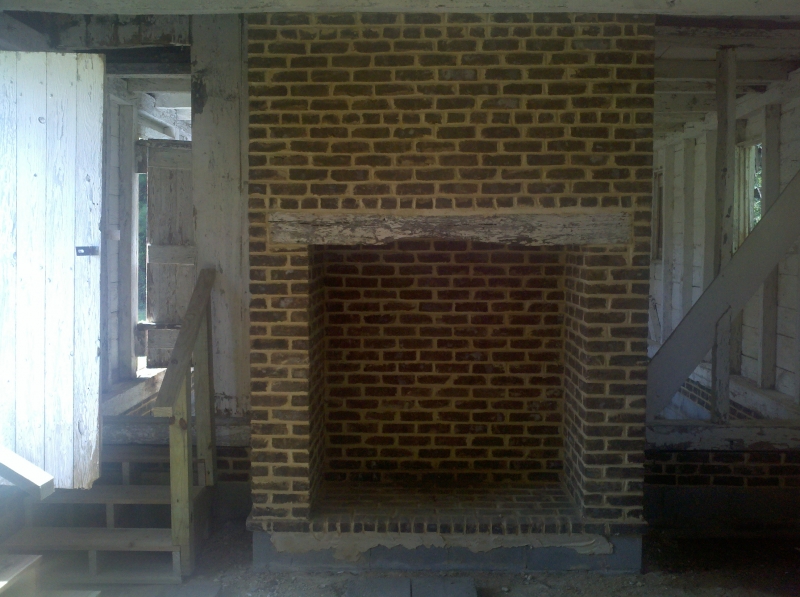
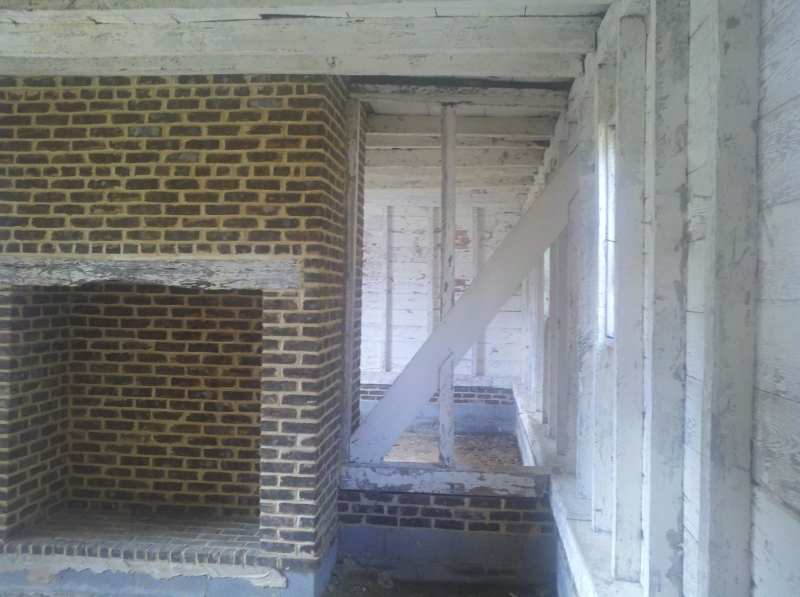
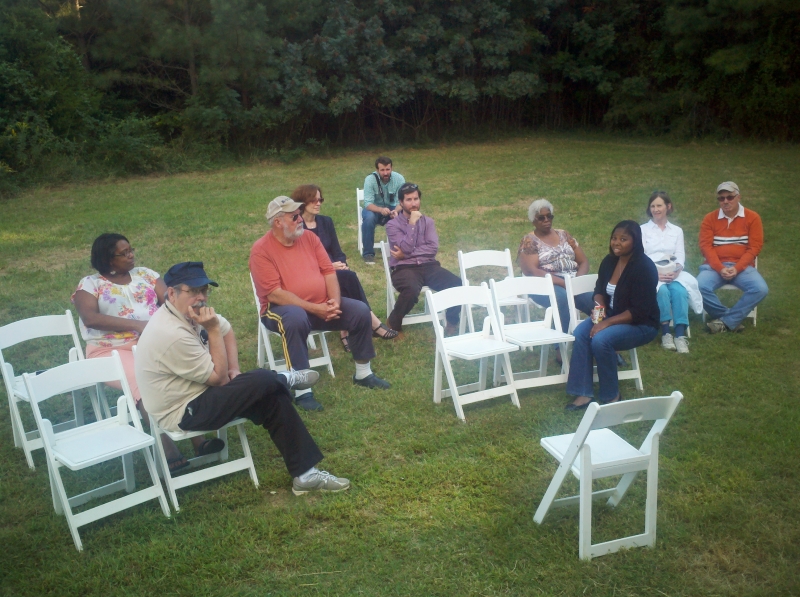
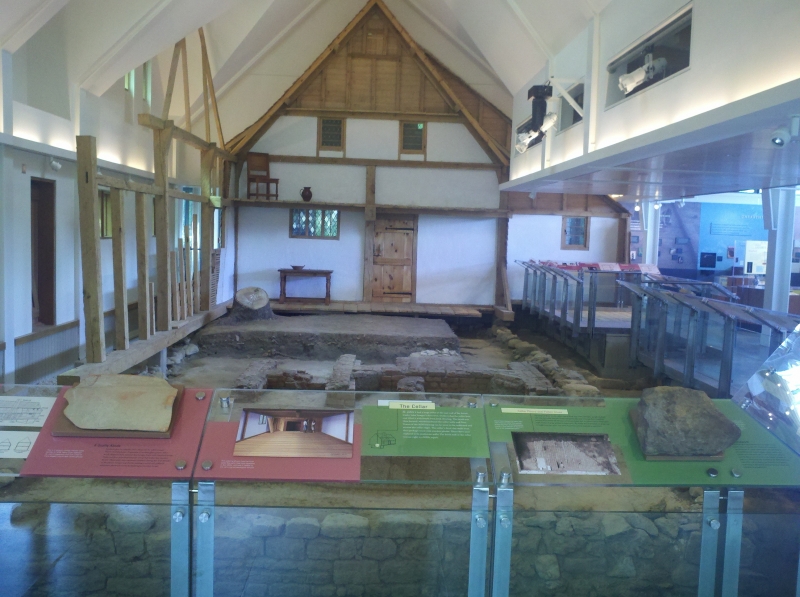

I love the thimble. I am a sewing woman.
Naomi, Great to hear from you. I still remember the time that we both stood on that auction block in Texas. I hope to see you at the Slave Dwelling Project Conference.
As usual, Joe, it was very well written and enjoyable! I was glad I was included in the report.
Beth, Thank you for checking in. We should talk soon. Great things are happening.
At long last Terry. A story long overdue. Has anyone continued the research into the contributions of enslaved Americans, very likely kin of families residing in the Brome plantation cabins, to the development of the neighboring Female Seminary in 1834 (now St. Mary’s College of Maryland)? How about the Milburn family descendants who worked at St. Mary’s College as late as the 1970s, and descendants of slaves who still work at SMCM. We are Still Here. I still have a lot of that research that met with mixed reaction four years ago.
Anne – so good to hear from you! First, I hope you can go check out the digital exhibit I put together for HSMC at http://stmaryscity.org/walktogether
Second, regarding connections between Brome’s slaves and the Seminary…I don’t believe anyone has continued with that research, sadly. I looked through the files of yours that were at the College, but I didn’t see any connections with my data. I’d love to hear about anything you may have found!
The Milburns are the family that we are working with on the interpretation of the duplex, and I’ve done multiple interviews with Emma Hall, who is wonderful.